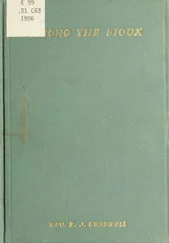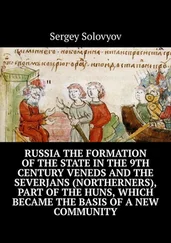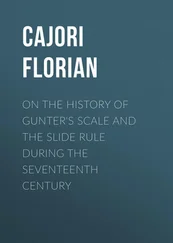Charles Addison - The History of the Knights Templars, the Temple Church, and the Temple
Здесь есть возможность читать онлайн «Charles Addison - The History of the Knights Templars, the Temple Church, and the Temple» — ознакомительный отрывок электронной книги совершенно бесплатно, а после прочтения отрывка купить полную версию. В некоторых случаях можно слушать аудио, скачать через торрент в формате fb2 и присутствует краткое содержание. Жанр: foreign_antique, foreign_prose, на английском языке. Описание произведения, (предисловие) а так же отзывы посетителей доступны на портале библиотеки ЛибКат.
- Название:The History of the Knights Templars, the Temple Church, and the Temple
- Автор:
- Жанр:
- Год:неизвестен
- ISBN:нет данных
- Рейтинг книги:5 / 5. Голосов: 1
-
Избранное:Добавить в избранное
- Отзывы:
-
Ваша оценка:
- 100
- 1
- 2
- 3
- 4
- 5
The History of the Knights Templars, the Temple Church, and the Temple: краткое содержание, описание и аннотация
Предлагаем к чтению аннотацию, описание, краткое содержание или предисловие (зависит от того, что написал сам автор книги «The History of the Knights Templars, the Temple Church, and the Temple»). Если вы не нашли необходимую информацию о книге — напишите в комментариях, мы постараемся отыскать её.
The History of the Knights Templars, the Temple Church, and the Temple — читать онлайн ознакомительный отрывок
Ниже представлен текст книги, разбитый по страницам. Система сохранения места последней прочитанной страницы, позволяет с удобством читать онлайн бесплатно книгу «The History of the Knights Templars, the Temple Church, and the Temple», без необходимости каждый раз заново искать на чём Вы остановились. Поставьте закладку, и сможете в любой момент перейти на страницу, на которой закончили чтение.
Интервал:
Закладка:
The first authentic notice of an intention on the part of the Hospitallers to occupy themselves with military matters, occurs in the bull of Pope Innocent the Second, dated A. D. 1130. This bull is addressed to the archbishops, bishops, and clergy of the church universal, and informs them that the Hospitallers then retained, at their own expense, a body of horsemen and foot soldiers, to defend the pilgrims in going to and in returning from the holy places; the pope observes that the funds of the hospital were insufficient to enable them effectually to fulfil the pious and holy task, and he exhorts the archbishops, bishops, and clergy, to minister to the necessities of the order out of their abundant property. 69 69 Fratres ejusdem domus non formidantes pro fratribus suis animas ponere; cum servientibus et equitaturis ad hoc officium specialiter deputatis et propriis sumptibus retentis , tam in eundo, quam redeundo ab incursibus Paganorum defensant. — De Vertot. hist. des chev. de Malte, liv. i. preuve 9.
The Hospitallers consequently at this period had resolved to add the task of protecting to that of tending and relieving pilgrims.
After the accession (A. D. 1168) of Gilbert d’Assalit to the guardianship of the Hospital – a man described by De Vertot as “bold and enterprising, and of an extravagant genius” – a military spirit was infused into the Hospitallers, which speedily predominated over their pious and charitable zeal in attending upon the poor and the sick. Gilbert d’Assalit was the friend and confidant of Amalric, king of Jerusalem, and planned with that monarch a wicked invasion of Egypt in defiance of treaties. The Master of the Temple being consulted concerning the expedition, flatly refused to have anything to do with it, or to allow a single brother of the order of the Temple to accompany the king in arms; “For it appeared a hard matter to the Templars,” says William of Tyre, “to wage war without cause, in defiance of treaties, and against all honour and conscience, upon a friendly nation, preserving faith with us, and relying on our own faith.” 70 70 Will. Tyr. lib. xx. cap. 5.
Gilbert d’Assalit consequently determined to obtain for the king from his own brethren that aid which the Templars denied; and to tempt the Hospitallers to arm themselves generally as a great military society, in imitation of the Templars, 71 71 Prædicti enim Hospitalis fratres ad imitationem fratrum militiæ Templi, armis materialibus utentes, milites cum servientibus in suo collegio receperunt. — Jac. de Vit. cap. lxv.
and join the expedition to Egypt, Gilbert d’Assalit was authorised to promise them, in the name of the king, the possession of the wealthy and important city of Belbeis, the ancient Pelusium, in perpetual sovereignty. 72 72 Will. Tyr. lib. xx. cap. 5.
According to De Vertot, the senior Hospitallers were greatly averse to the military projects of their chief: “They urged,” says he, “that they were a religious order, and that the church had not put arms into their hands to make conquests;” 73 73 This assumption of arms by the Hospitallers was entirely at variance with the original end and object of their institution. Pope Anastasius, in a bull dated A. D. 1154, observes, “omnia vestra sustentationibus peregrinorum et pauperum debent cedere, ac per hoc nullatenus aliis usibus ea convenit applicari.” — De Vertot , liv. i. preuve 13.
but the younger and more ardent of the brethren, burning to exchange the monotonous life of the cloister for the enterprize and activity of the camp, received the proposals of their superior with enthusiasm, and a majority of the chapter decided in favour of the plans and projects of their Guardian. They authorized him to borrow money of the Florentine and Genoese merchants, to take hired soldiers into the pay of the order, and to organize the Hospitallers as a great military society.
Gilbert d’Assalit bestirred himself with great energy in the execution of these schemes; he wrote letters to the king of France for aid and assistance, 74 74 Gest. Dei per Francos , p. 1177.
and borrowed money of the emperor of Constantinople. “Assalit,” says De Vertot, “with this money levied a great body of troops, which he took into the pay of the order; and as his fancy was entirely taken up with flattering hopes of conquest, he drew by his indiscreet liberalities a great number of volunteers into his service, who like him shared already in imagination all the riches of Egypt.”
A.D. 1168.
It was in the first year of the government of Philip of Naplous (A. D. 1168) that the king of Jerusalem and the Hospitallers marched forth upon their memorable and unfortunate expedition. The Egyptians were taken completely by surprise; the city of Belbeis was carried by assault, and the defenceless inhabitants were barbarously massacred; “they spared,” says De Vertot, “neither old men nor women, nor children at the breast,” after which the desolated city was delivered up to the brethren of the Hospital of St. John. They held it, however, for a very brief period; the immorality, the cruelty, and the injustice of the Christians, speedily met with condign punishment. The king of Jerusalem was driven back into Palestine; Belbeis was abandoned with precipitation; and the Hospitallers fled before the infidels in sorrow and disappointment to Jerusalem. There they vented their indignation and chagrin upon the unfortunate Gilbert d’Assalit, their superior, who had got the order into debt to the extent of 100,000 pieces of gold; they compelled him to resign his authority, and the unfortunate guardian of the hospital fled from Palestine to England, and was drowned in the Channel. 75 75 Will. Tyr. lib. xx. cap. 5. Hoveden in Hen. 2, p. 622. De Vertot , Hist. des Chevaliers de Malte, liv. ii. p. 150 to 161, ed. 1726.
From this period, however, the character of the order of the Hospital of St. John was entirely changed; the Hospitallers appear henceforth as a great military body; their superior styles himself Master, and leads in person the brethren into the field of battle. Attendance upon the poor and the sick still continued, indeed, one of the duties of the fraternity, but it must have been feebly exercised amid the clash of arms and the excitement of war.
CHAPTER IV
The contests between Saladin and the Templars – The vast privileges of the Templars – The publication of the bull, omne datum optimum – The Pope declares himself the immediate Bishop of the entire Order – The different classes of Templars – The knights – Priests – Serving brethren – The hired soldiers – The great officers of the Temple – Punishment of cowardice – The Master of the Temple is taken prisoner, and dies in a dungeon – Saladin’s great successes – The Christians purchase a truce – The Master of the Temple and the Patriarch Heraclius proceed to England for succour – The consecration of the Temple Church at London.
“The firmest bulwark of Jerusalem was founded on the knights of the Hospital of St. John and of the Temple of Solomon; on the strange association of a monastic and military life, which fanaticism might suggest, but of which policy must approve. The flower of the nobility of Europe aspired to wear the cross and profess the vows of these respectable orders; their spirit and discipline were immortal; and the speedy donation of twenty-eight thousand farms or manors enabled them to support a regular force of cavalry and infantry for the defence of Palestine.” – Gibbon.
Odo de St.
Amand.
A. D. 1170.
The Master, Philip of Naplous, resigned his authority after a short government of three years, and was succeeded by Brother Odo de St. Amand, a proud and fiery warrior, of undaunted courage and resolution; having, according to William, Archbishop of Tyre, the fear neither of God nor of man before his eyes. 76 76 Will. Tyr. lib. xxi. cap. 29.
Интервал:
Закладка:
Похожие книги на «The History of the Knights Templars, the Temple Church, and the Temple»
Представляем Вашему вниманию похожие книги на «The History of the Knights Templars, the Temple Church, and the Temple» списком для выбора. Мы отобрали схожую по названию и смыслу литературу в надежде предоставить читателям больше вариантов отыскать новые, интересные, ещё непрочитанные произведения.
Обсуждение, отзывы о книге «The History of the Knights Templars, the Temple Church, and the Temple» и просто собственные мнения читателей. Оставьте ваши комментарии, напишите, что Вы думаете о произведении, его смысле или главных героях. Укажите что конкретно понравилось, а что нет, и почему Вы так считаете.












